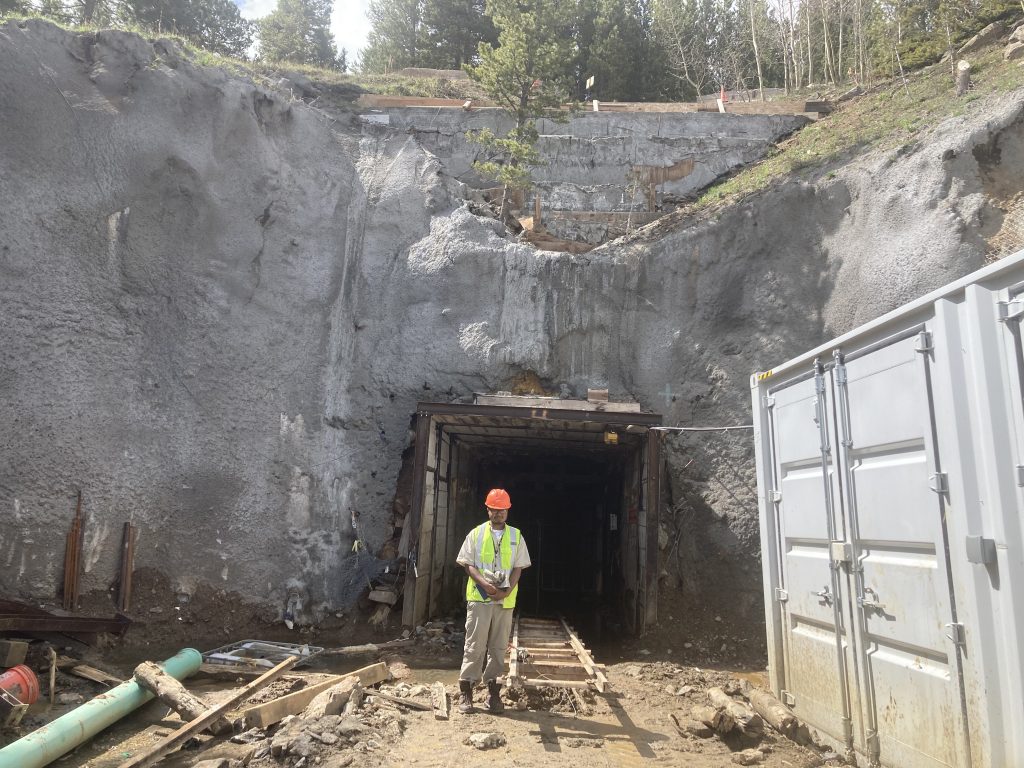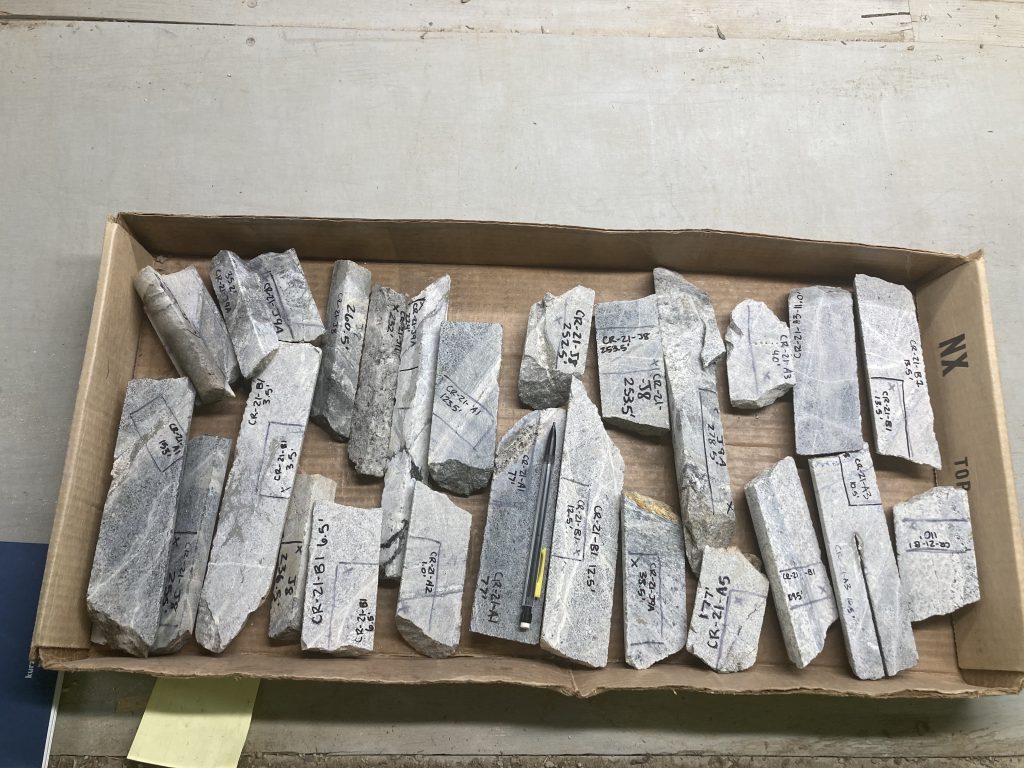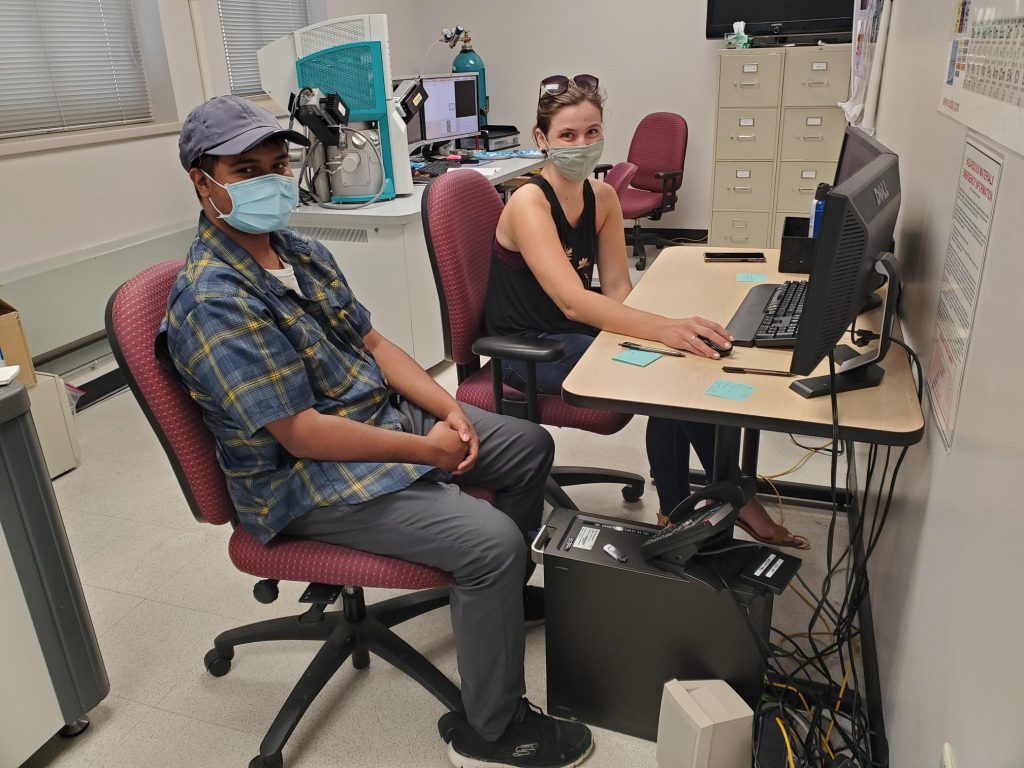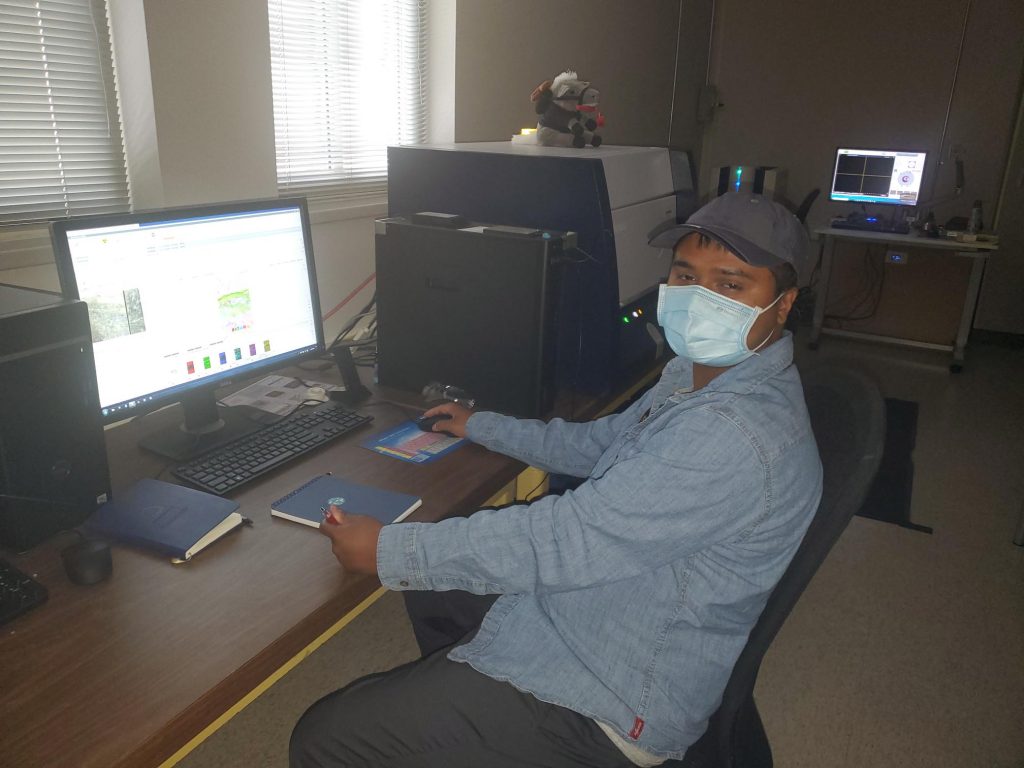
RESESS intern Shams Ahmed standing in front of the Cross Mine (Photo/Sage Langston-Stewart, Colorado School of Mines) 
Drill core samples with 15cm pencil for scale. (Photo/Shams Ahmed) 
Shams Ahmed and lab manager at the Mineral and Materials Characterization Facility, Kelsey Livingston, searching for signs of precious minerals in the automated mineralogy data. (Photo/Dr. Katharina Pfaff) 
Shams Ahmed working with the µXRF data at the Mineral and Materials Characterization Facility in the Department of Geology and Geological Engineering at the Colorado School of Mines, in Golden, CO. (PC: Dr. Katharina Pfaff)
This summer we’re introducing interns in the RESESS and Geo-Launchpad programs to shine a spotlight on the research projects they are completing throughout these 11-week internships and on their interests in geoscience.
Shamsuddin (Shams) Ahmed is a rising junior at Appalachian State University in Boone, NC. After enjoying his laboratory class in high school and learning about how interdisciplinary geoscience is, Shams decided to major in Quantitative Geoscience and minor in mathematics in college. At this point in his academic career, he is looking for opportunities to expand his horizons, to get a taste for the different branches of geoscience before deciding which field interests him the most to eventually pursue a graduate degree in. At Appalachian State University, Shams participated in paleontological research under Dr. Andrew Heckert, working to better understand an Upper Triassic to Mid-Late Norian microvertebrate assemblage from East-Central New Mexico with an incomplete dataset. Recently, an abstract for this research was accepted by the Society of Vertebrate Paleontology. He applied to RESESS to potentially be exposed to other branches of geoscience, as well as get some more research experience in Earth science.
Shams is completing his RESESS research project with Dr. Katharina (Katha) Pfaff of the Colorado School of Mines. Dr. Pfaff and her graduate student, Sage Langston-Stewart, are examining the Cross and Caribou Mines in Nederland, CO, both of which were previously silver mines. Dr. Pfaff, Sage, and Shams are searching for gold in the mines, in addition to remaining silver. Although the research project spans both mines, Shams’ contribution is related to six samples from the Cross Mine. In order to examine the mineralogy of the samples, Shams and his mentor employ several analytical techniques including X-ray fluorescence (XRF), field emission-scanning electron microscopy (FE-SEM), and automated mineralogy. In order to conduct an analysis with XRF, the rock sample is bombarded with high-energy X-rays. Within the sample, the atoms will become excited. Eventually, an electron in the inner shell will obtain enough energy that it is emitted from the atom. To achieve stability once again, the atom will fill the inner electron shell within an electron from a higher energy shell. In the process of moving to a lower energy state, the electron releases a fluorescent X-ray. The amount of energy released is unique to the atom, so XRF can be utilized to identify the elements present in a sample. Automated mineralogy combines Scanning Electron Microscopy (SEM) and Energy-Dispersive X-ray Spectroscopy (EDS) to quickly analyze samples and provide a mineralogical composition.
With these techniques, Shams and Dr. Pfaff are searching for relationships between the mineralogy or features of a sample and the presence of gold; for example, if the gold is commonly present near carbonate or quartz veins in these samples. Both the Caribou and Cross mines represent magmatic hydrothermal systems, so the mineralogical trends pertaining to gold and silver present in these mines may be applicable to other magmatic hydrothermal systems around the globe.
Q&A
- What has been your favorite part of the RESESS program so far?
My favorite part has just been exposure to the different kinds of things, like the different careers in Career Circle. There are different people that just talk about their careers every week. Also the exposure to mineralogy and the economic geology side of things, like mining. Being able to be here at the Colorado School of Mines, which is a premier school for engineering, mining geology, and exploration geology, has been really good. I also like the research side of it and the people are great; I’ve made some friends here during the internship. Overall everything is pretty good!
- What have you gained from your mentorship with Dr. Pfaff?
I have learned a lot about economic geology and mineralogy in general because I’ve never had a mineralogy class yet. I’m going to take one this coming fall semester, so I guess I’m getting a crash course in some basic mineralogy! I’ve also learned about the techniques they use like XRD, XRF, FE-SEM, and automated mineralogy.
- Have you learned about any new topics or research techniques that have really piqued your interest?
E-beam methods in general—the process is pretty interesting. Atoms are bombarded with x-rays, and one of the electrons pops out. One of the electrons from the outer shells replaces the electron that popped off, and then the energy that was released is measured. It’s pretty heavy on physical chemistry and that has piqued my interest, like learning more about atoms, how x-rays affect the different atoms, and how we can infer the chemistry of the material that we’re looking at from that.
Shams plans to return to Appalachian State University in the fall to complete the final two years of his undergraduate career, and hopes to find time in between to get a GIS certificate as well. He aims to further explore economic geology opportunities, as well as materials science and engineering due to his newly developed interest in feasible, long-lasting, and eco-friendly building materials, before deciding on his career path.
Written by:
- Lucia Bellino, USIP Intern
- Posted: 21 July 2021
- Last updated: 21 July 2021
- Tags: FE-SEM, internships, mineralogy, XRF


